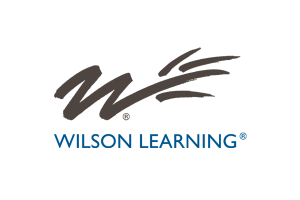Editor’s note: As we ended a difficult and unique year and entered a new one, the Training Industry editorial team asked learning leaders to write in with their reflections on 2020 and predictions for 2021. This series, “What’s Changed and What Hasn’t?: Taking Stock of 2020 and Planning for 2021,” is the result. Plus, don’t miss our infographic, “5 Tips for Turning 2020 Disarray Into 2021 Direction: Insights From Learning Leaders,” which shares insights from the series.
In 2020, the workplace changed forever.
The workplace changes every year, but last year was more dramatic. It shone a light on which elements of training and development are a must-have moving forward and which areas will need a strong pivot.
In his book “The Infinite Game,” Simon Sinek wrote, “Infinite-minded leaders understand that ‘best’ is not a permanent state. Instead, they strive to be ‘better.’ ‘Better’ suggests a journey of constant improvement and makes us feel like we are being invited to contribute our talents and energies to make progress in that journey.”
As the journey presses forward, there are some essential practices that are here to stay and some that will require a better approach in the more humanistic workplace we’ve entered into.
What’s Here to Stay
Resiliency
In the workplace, resilience was always necessary. However, the word has caught a lot of attention and focus last year because of the stressors of 2020. Hara Estroff Marano captured the essence of resiliency in a 2003 Psychology Today article called “The Art of Resilience”:
“At the heart of resilience is a belief in oneself—yet also a belief in something larger than oneself. Resilient people do not let adversity define them. They find resilience by moving towards a goal beyond themselves, transcending pain and grief by perceiving bad times as a temporary state of affairs.”
This year, talent development professionals will be asked to help employees embrace the emotions and the stressors associated with the changing workforce, while performing effectively. Enabling employees to be more resilient and develop the areas that challenge them will continue to be vital.
Trust and Communication
At the core of strong, effective teams and workplace cultures lies trust and the ability to flex communication styles. Helping team members communicate with trust was already a challenging task assigned to talent development professionals. Assessments that help individuals understand their preferred communication style, and how that style can complement or clash with other styles, will continue to be a valuable workplace investment.
It is imperative for talent development professionals to partner with teams and go beyond awareness by using regular action touchpoints after an assessment. These touchpoints can help teams continue to embrace their communication strengths and dive into their discomforts as the workplace changes and evolves. This process will not only strengthen communication but will also support better communication practices, whether teams are in person or remote.
The New Frontier: Grace and Empathy
Although grace and empathy should already have been top priorities in the workplace, 2020 showed us that each person’s “best” looks different from day to day. As leaders and team members had views into their co-workers’ homes, they saw things they had never seen before. They saw the team member working in her bedroom each day with her headboard as her backdrop because her partner needed the spare room for meetings and their children were doing schoolwork in the living room. They saw the team member who finally shared one day that he converted his bathroom sink into a desk because the bathroom was the only place he could close the door in the loft he shared with his partner, who was working at the kitchen table.
These real-life scenes became the new workplace normal, and they helped remind us of the importance of demonstrating empathy and giving others, and ourselves, grace. Talent development must address this call by providing learning experiences that help employees explore what grace and empathy feel and look like.
Moving forward, talent development professionals must help employees identify and take advantage of learning and growth opportunities that will help them achieve the objectives associated with Professor Theresa Wiseman’s four attributes of empathy:
-
- To be able to see the world as others see it.
- To be nonjudgmental.
- To understand another person’s feelings.
- To communicate our understanding of that person’s feelings.
Learning to embrace and practice these attributes opens the door for a workplace that is more humanistic and authentic. As a PwC article recently pointed out, “Management teams should lead with empathy and demonstrate an understanding that while all of their employees have experienced this crisis, they haven’t all experienced it the same way.”
For years, we’ve described soft skills as a priority, but the focus on business outcomes over learning and development sent a clear message regarding what was truly valued. Low employee engagement statistics have famously reflected this misalignment. Last year demonstrated that the way for businesses to thrive moving forward is to continue embracing growth in soft skills, like resiliency, communication and trust, while adding empathy and grace to the list.
This approach can provide hard, bottom-line results, as employees who feel their voice is heard by their employers are 4.6 times more likely to produce their best work. Just remember: Their best may look different from day to day, so extend some grace!









